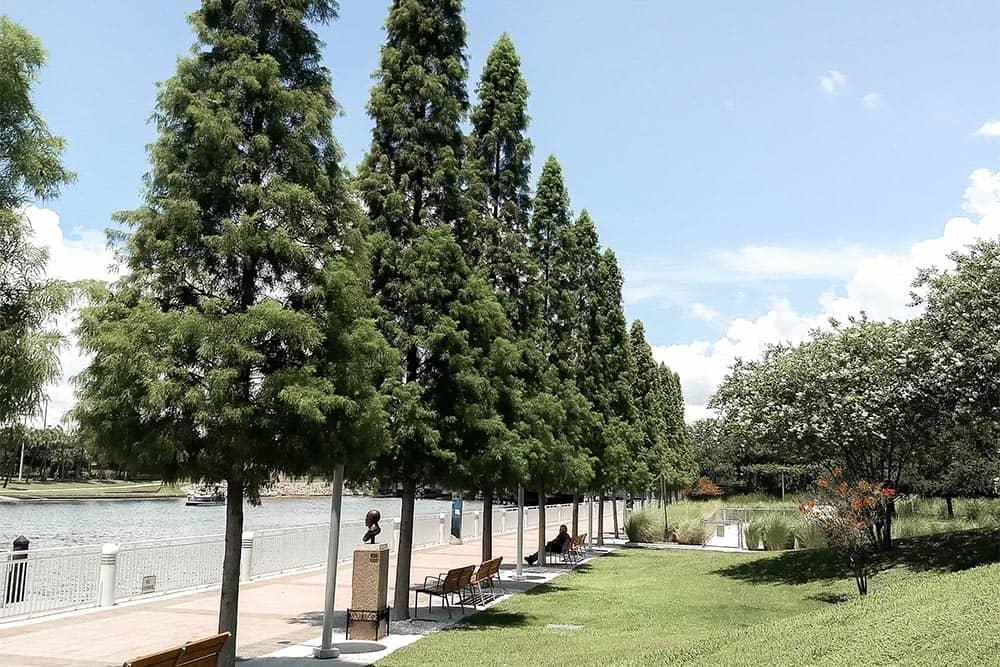The City of Tampa’s Urban Forest Management Plan identifies a series of quantifiable steps that guides activities and resources to accomplish predetermined outcomes, the time frame for implementation and the responsible agency or partnership. The plan is best seen as a part of a long-term process, a living and adaptable plan of action, and not a static product.

In 2006, Tampa had an estimated 7.8 million trees with a replacement value of $1.4 billion. In 2016 Tampa had an estimated 9.3 million trees with a replacement value of $2.01 billion
2016 COT Tree Canopy and Urban Forest Analysis
Key Findings - Urban Forest Composition
- Tampa’s municipal forest consists of 9.3 million trees and contains 112 tree species and 145 shrub species.
- Of the 112 tree species identified, 51 (46%) are listed in the Urban Forest Management Plan’s Tree Matrix as desirable species suitable for planting.
- 55% of the tree species are rated as having a high to medium-high wind resistance; and 36% having a medium-low to low wind resistance. There is no reliable wind resistance information on the remaining 9%.
- Native species account for 70% of the trees found in Tampa. Brazilian pepper now represents 8% of the total population (11% if mangroves are excluded).
- Eight species of trees and palms account for 62% of the City’s trees.
- One out of every four trees in Tampa is a mangrove species. However, mangrove ecosystems account for only 1.6% of Tampa’s land area and 2.5% of the leaf area.
- The high density of these mangrove ecosystems partially explains why tree size is skewed to smaller diameter trees — with 70% between 1" and 6" in diameter.
- While some areas of the City are densely forested, Tampa has an average of 125 trees per acre — a third of what is typical of native forests.
- With regard to forest health, 55% of trees are rated as being in excellent condition; 28% are in good condition, 6% are in fair condition, and 11% are in poor condition or dead.
Key Findings – Urban Forest Canopy Cover
- Tampa has 27,641 acres of the tree canopy, 20,839 acres of grass/shrub land cover, and about 23,926 acres of impervious surfaces (e.g., buildings, roads, and other paved surfaces).
- Estimated citywide canopy coverage increased from 31.7% in 2006 to 34.4% in 2011 but then decreased to 32.3% in 2016. These differences were not statistically significant.
- From 2006 to 2011, there was a slight increase in the tree canopy in all Planning Districts and a significant increase in South Tampa. Between 2011 and 2016 there was essentially no change within most Districts, except a slight increase in Central Tampa.
- With regard to the Neighborhood Associations, tree canopy ranged from a low of 4% in the Channel District to a high of 73% in Tampa Palms.
- Most of the City’s tree canopy (13,956 acres or 50%) is located on residential properties.
- Nearly 25% of all tree canopy (6,522 acres) is located on properties designated as Major Environmentally Sensitive Areas in the Land Use Element of the Tampa Comprehensive Plan.
- Compared to other Future Land Use categories, the public Right-of-Way has the third-largest acreage of tree canopy (2,797 acres) and an even larger area of grass/shrub (3,316 acres) where some additional tree planting could conceivably be done.
For more information, contact the City Planning Department at TampaPlanning@tampagov.net
